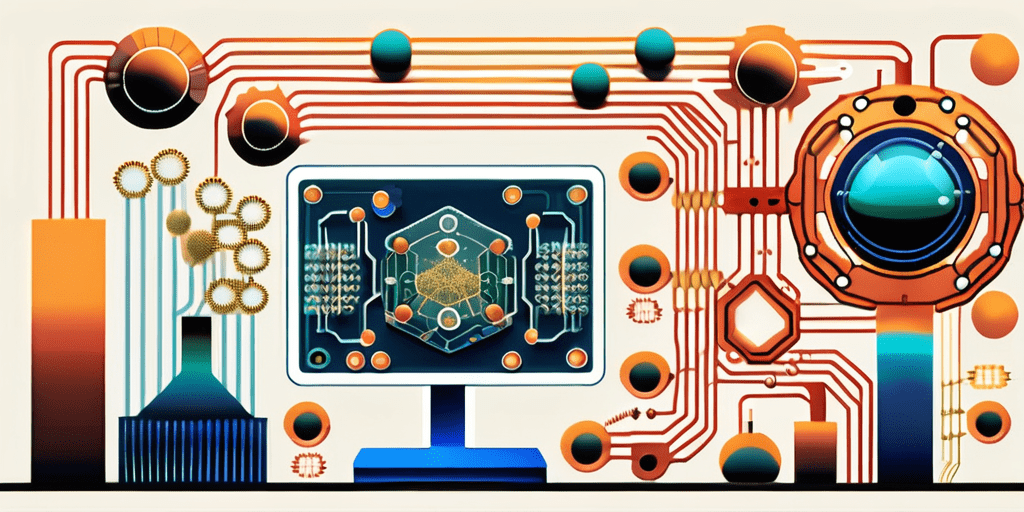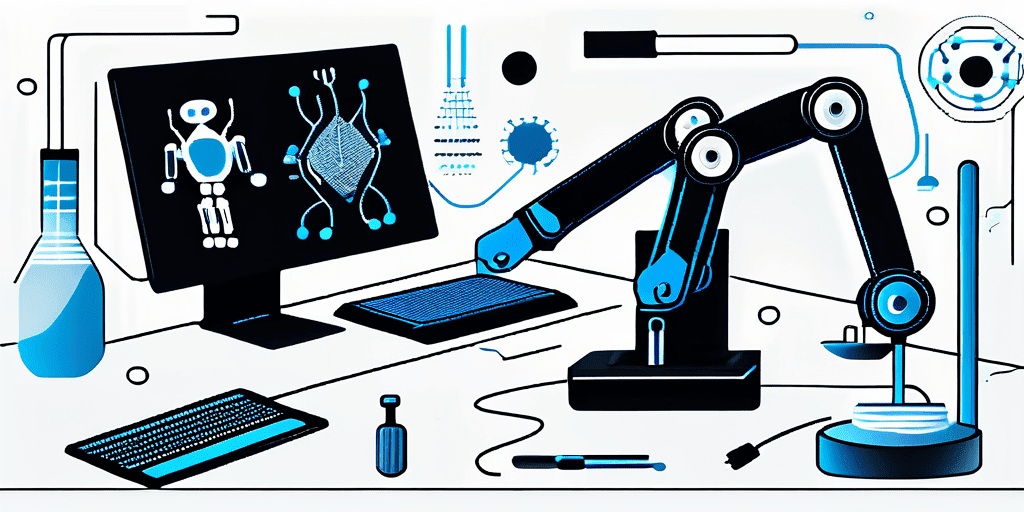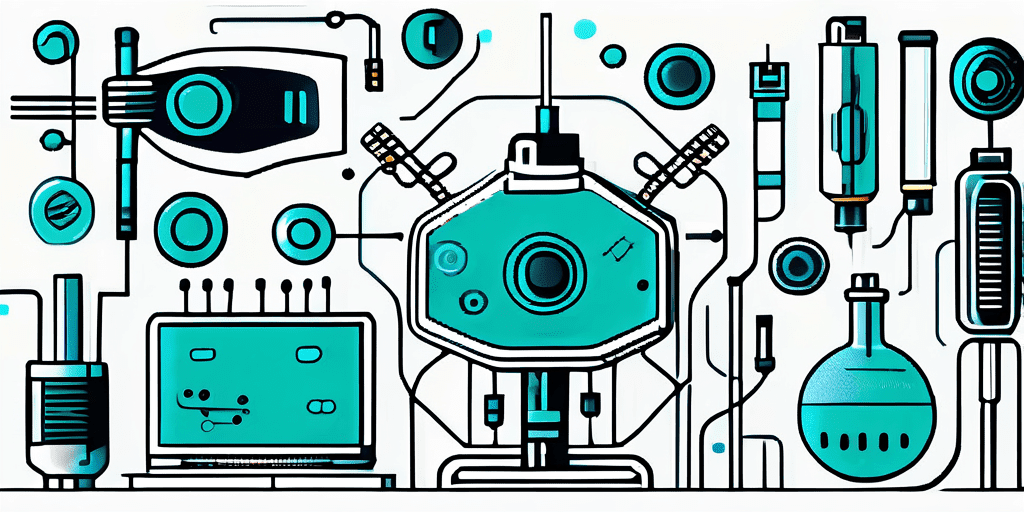Nanotechnology is a field that has garnered significant attention over the past few decades. With its potential to revolutionize various industries, from medicine to energy production, nanotech has become a hotbed for innovation and exploration. In this article, we will delve into the basics of nanotechnology, examine its impact on different sectors, explore the latest breakthroughs, and discuss what the future holds for this exciting field.
Understanding the Basics of Nanotechnology
Before we dive into the latest innovations, let’s first establish what nanotechnology is all about. At its core, nanotech involves manipulating matter on an atomic and molecular scale, working with particles that are typically between 1-100 nanometers in size. To put this into perspective, a nanometer is one-billionth of a meter, roughly 100,000 times smaller than the width of a human hair.

Nanotechnology is a multidisciplinary field that encompasses various scientific disciplines such as physics, chemistry, biology, and engineering. It involves designing, synthesizing, characterizing, and applying materials and devices at the nanoscale. The unique properties exhibited by materials at this scale open up a plethora of possibilities for developing novel solutions in areas such as medicine, electronics, energy, and environmental science.
Defining Nanotechnology
In simple terms, nanotechnology is all about creating, manipulating, and controlling materials at the nanoscale. By harnessing the unique properties exhibited by matter at this scale, scientists and researchers can develop groundbreaking solutions to various challenges.
Nanotechnology has the potential to revolutionize industries by enabling the production of materials with enhanced properties such as increased strength, lighter weight, improved conductivity, and higher chemical reactivity. This ability to tailor materials at the atomic level offers unprecedented control over their behavior and performance, paving the way for disruptive technologies and innovative applications.
The Evolution of Nanotechnology
The concept of nanotechnology can be traced back to a talk given by physicist Richard Feynman in 1959, where he discussed the potential of working with individual atoms and molecules. However, it wasn’t until the 1980s and 1990s that significant advancements were made, leading to the birth of modern nanotechnology.
One of the key milestones in this evolution was the invention of the scanning tunneling microscope (STM) in 1981 by Gerd Binnig and Heinrich Rohrer, which allowed researchers to image and manipulate atoms at an unprecedented level. This breakthrough opened up new avenues for exploring the nanoscale world and paved the way for the development of nanoscale devices and materials with tailored properties.
The Impact of Nanotechnology on Various Industries
Today, nanotechnology has permeated multiple industries, revolutionizing the way we approach various challenges. Let’s take a closer look at some of these sectors and how nanotech is transforming them.
Nanotechnology in Medicine
The field of medicine has seen tremendous advancements thanks to nanotechnology. For instance, scientists have developed targeted drug delivery systems using nanoparticles, enabling precise treatment of diseases such as cancer. These nanoparticles can be engineered to deliver drugs directly to tumor cells, sparing healthy cells from unnecessary exposure.
Moreover, nanotechnology has paved the way for innovative diagnostic tools. Nanosensors capable of detecting specific biomarkers can provide early detection of diseases, leading to more effective treatments and improved patient outcomes.
But the impact of nanotechnology in medicine goes beyond drug delivery and diagnostics. Researchers are also exploring the use of nanomaterials in tissue engineering and regenerative medicine. By designing nanoscale scaffolds, scientists can create an environment that promotes the growth and regeneration of damaged tissues. This approach can potentially revolutionize the treatment of injuries and diseases, offering new hope to patients.
Nanotechnology in Electronics
In the electronics industry, nanotech has played a pivotal role in pushing the boundaries of device miniaturization and performance. Manufacturers now utilize nanomaterials to enhance the efficiency and functionality of electronic components.
For example, the development of nanoscale transistors has revolutionized the semiconductor industry, allowing for faster, smaller, and more energy-efficient devices. Companies like Intel and TSMC have been at the forefront of these innovations, constantly pushing the limits of what is possible with nanotechnology.
But the impact of nanotechnology in electronics goes beyond transistors. Nanomaterials are also being used to improve the durability and flexibility of electronic displays, such as those found in smartphones and televisions. By incorporating nanoscale materials, manufacturers can create screens that are thinner, lighter, and more resistant to scratches and cracks.
Nanotechnology in Energy Production
As the world seeks sustainable and clean energy sources, nanotechnology has emerged as a promising avenue for energy production and storage. Researchers are exploring ways to improve the efficiency of solar panels by incorporating nanomaterials that can absorb sunlight more effectively.
Nanostructured materials are also being used to develop energy storage solutions, such as advanced batteries and supercapacitors. These technologies have the potential to revolutionize the renewable energy sector, enabling more efficient and reliable energy storage.
Nanotechnology is being applied to enhance the efficiency of fuel cells, which are devices that convert chemical energy into electrical energy. By using nanoscale catalysts, scientists can significantly improve the performance of fuel cells, making them more viable for widespread adoption in various industries, including transportation and power generation.
The Latest Innovations in Nanotechnology
The field of nanotechnology is constantly evolving, with new breakthroughs being made regularly. Let’s delve into some of the most recent and exciting innovations that are pushing the boundaries of what is possible.

Breakthroughs in Nanomaterials
Nanomaterials are at the heart of many nanotech advancements, and recent breakthroughs have opened up new possibilities. For instance, graphene, a single layer of carbon atoms arranged in a two-dimensional honeycomb lattice, has garnered significant attention for its exceptional strength, electrical conductivity, and flexibility.
Researchers are exploring its potential in various applications, ranging from high-performance electronics to water purification. Scientists at the University of Manchester have developed a graphene-based sieve capable of removing salt from seawater, offering a promising solution to the global water scarcity problem.
Graphene’s unique properties have also sparked interest in energy storage. Researchers at Stanford University have successfully used graphene to create a supercapacitor that can charge electronic devices within seconds and last significantly longer than traditional batteries.
Advances in Nanomedicine
Scientists are making incredible strides in nanomedicine, developing novel therapies and diagnostic techniques. For example, researchers at MIT have developed nanoparticles capable of delivering gene-editing tools directly to targeted cells, opening up new possibilities for precision medicine.
Furthermore, nanotechnology is revolutionizing drug delivery systems. Scientists at the University of California, San Diego, have created nanocarriers that can transport drugs directly to cancer cells while sparing healthy cells, minimizing side effects and improving treatment outcomes.
Companies like Novartis and Pfizer are investing heavily in this area, recognizing the immense potential of nanotechnology in improving patient care. In fact, Novartis has recently received approval from the FDA for its nanotechnology-based drug, which uses tiny particles to deliver medication directly to the affected area, resulting in more effective treatment and fewer side effects.
Progress in Nano-electronics
Continual advancements in nanoelectronics have paved the way for faster and more efficient devices. Researchers are exploring emerging technologies such as quantum dots and carbon nanotubes, which could potentially replace traditional silicon-based transistors, enabling even smaller and more powerful electronics.
Companies like IBM and Samsung are at the forefront of these developments, investing heavily in research and development to maintain their technological edge. IBM has recently announced a significant breakthrough on nanoelectronics by successfully creating the world’s smallest transistor, measuring just one nanometer in length.
This remarkable achievement not only pushes the limits of miniaturization but also opens up new possibilities for the future of computing, with the potential for faster processors and increased storage capacity.
The Future of Nanotechnology
As we look ahead, it is clear that nanotechnology has a bright future ahead. Let’s explore some of the predicted developments, challenges, and ethical considerations that may shape the path forward.

Predicted Developments in Nanotech
The possibilities for nanotechnology seem limitless. Researchers are exploring avenues such as nanorobotics, where tiny robots could be deployed inside the body to perform intricate surgeries or deliver targeted therapies. Imagine a future where nanorobots navigate through our bloodstream, repairing damaged cells and fighting diseases with unparalleled precision. This groundbreaking technology could revolutionize the field of medicine, offering new hope for patients and transforming the way we approach healthcare.
Additionally, advancements in nanofabrication techniques may enable the production of more complex and precise nanoscale structures. Imagine a world where buildings are constructed using self-assembling nanomaterials, resulting in structures that are not only stronger and more durable but also environmentally friendly. This could revolutionize the construction industry, reducing waste and energy consumption while creating sustainable and aesthetically pleasing architectural wonders.
Potential Challenges and Solutions
While the potential of nanotechnology is enormous, it also comes with several challenges. Safety concerns surrounding the use of nanoparticles and the release of nanomaterials into the environment remain a significant focus of research. Scientists are working diligently to develop safe and responsible manufacturing and disposal methods to mitigate these risks. For example, they are exploring the use of biodegradable nanomaterials that break down harmlessly after fulfilling their intended purpose, minimizing their impact on the environment.
Another challenge lies in the scalability of nanotechnology. While we have made remarkable strides in the lab, translating these advancements into large-scale production is no small feat. Researchers are actively investigating innovative manufacturing techniques that can efficiently produce nanoscale devices and materials on a commercial scale. This includes exploring the use of 3D printing technology to fabricate intricate nanoscale structures with precision and speed.
Ethical Considerations in Nanotechnology Development
As with any emerging technology, ethical considerations are crucial in guiding its development and deployment. Questions regarding privacy, equitable access to nanotechnology, and potential unintended consequences must be addressed to ensure that the benefits of nanotech are distributed equitably and without harm.
Privacy concerns arise as nanotechnology enables unprecedented levels of surveillance and data collection. As nanosensors become more prevalent, capable of monitoring our every move and collecting vast amounts of personal data, it becomes essential to establish robust regulations and safeguards to protect individual privacy rights. Striking the right balance between technological advancements and personal privacy will be a key challenge that society must navigate.
Furthermore, ensuring equitable access to nanotechnology is paramount. As this field advances, it is crucial to prevent a technological divide where only a privileged few can benefit from its potential. Efforts must be made to bridge this gap, ensuring that nanotechnology is accessible to all, regardless of socioeconomic status or geographical location. By fostering inclusivity, we can harness the full potential of nanotech to address global challenges and improve the lives of people worldwide.
In conclusion, nanotechnology holds enormous potential to revolutionize various industries and address some of our most pressing challenges. From medicine to energy production, the impact of nanotech is already being felt. As we continue to unlock its true potential, it is crucial that we approach its development responsibly, addressing potential risks while striving for equitable access and distribution of its benefits. Doing so can shape a future where nanotechnology enhances our lives, transforms industries, and creates a more sustainable and equitable world.
As we embrace the transformative power of nanotechnology, it’s crucial to safeguard the innovations that drive our industries forward. Blue Goat Cyber understands the unique cybersecurity challenges businesses face at the forefront of nanotech, especially in the medical device sector. Our veteran-owned company specializes in comprehensive B2B cybersecurity services, including penetration testing, HIPAA and FDA compliance, and much more. Protect your nanotechnology advancements and ensure your operations meet the highest security standards. Contact us today for cybersecurity help and partner with a team as dedicated to security as you are to innovation.
